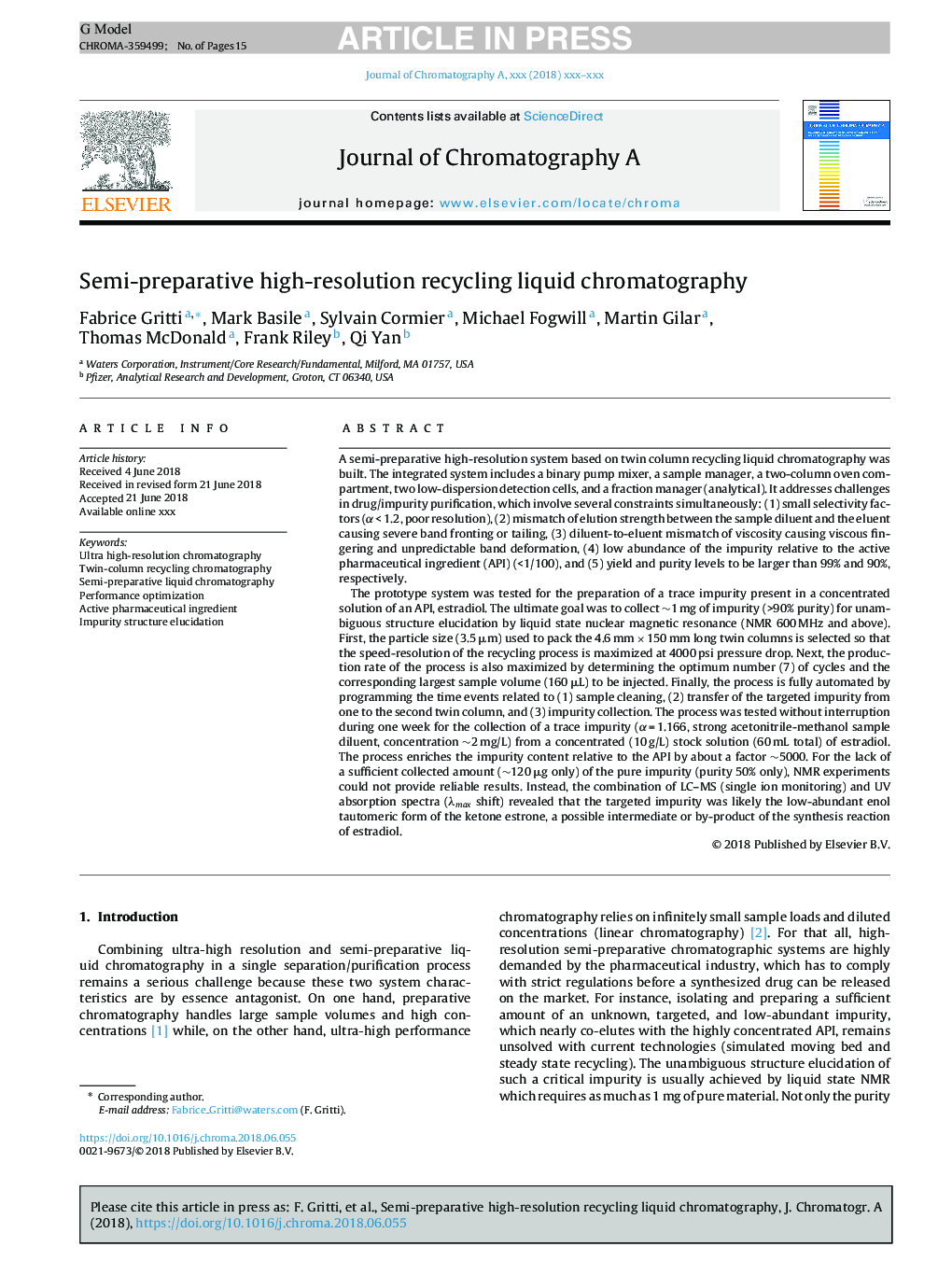| Article ID | Journal | Published Year | Pages | File Type |
|---|---|---|---|---|
| 7607491 | Journal of Chromatography A | 2018 | 15 Pages |
Abstract
The prototype system was tested for the preparation of a trace impurity present in a concentrated solution of an API, estradiol. The ultimate goal was to collect â¼1â¯mg of impurity (>90% purity) for unambiguous structure elucidation by liquid state nuclear magnetic resonance (NMR 600â¯MHz and above). First, the particle size (3.5â¯Î¼m) used to pack the 4.6â¯mmâ¯Ãâ¯150â¯mm long twin columns is selected so that the speed-resolution of the recycling process is maximized at 4000â¯psi pressure drop. Next, the production rate of the process is also maximized by determining the optimum number (7) of cycles and the corresponding largest sample volume (160â¯Î¼L) to be injected. Finally, the process is fully automated by programming the time events related to (1) sample cleaning, (2) transfer of the targeted impurity from one to the second twin column, and (3) impurity collection. The process was tested without interruption during one week for the collection of a trace impurity (αâ¯=â¯1.166, strong acetonitrile-methanol sample diluent, concentration â¼2â¯mg/L) from a concentrated (10â¯g/L) stock solution (60â¯mL total) of estradiol. The process enriches the impurity content relative to the API by about a factor â¼5000. For the lack of a sufficient collected amount (â¼120â¯Î¼g only) of the pure impurity (purity 50% only), NMR experiments could not provide reliable results. Instead, the combination of LC-MS (single ion monitoring) and UV absorption spectra (λmax shift) revealed that the targeted impurity was likely the low-abundant enol tautomeric form of the ketone estrone, a possible intermediate or by-product of the synthesis reaction of estradiol.
Keywords
Related Topics
Physical Sciences and Engineering
Chemistry
Analytical Chemistry
Authors
Fabrice Gritti, Mark Basile, Sylvain Cormier, Michael Fogwill, Martin Gilar, Thomas McDonald, Frank Riley, Qi Yan,
